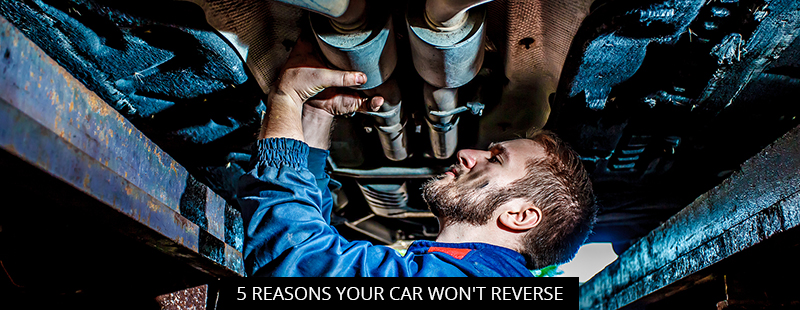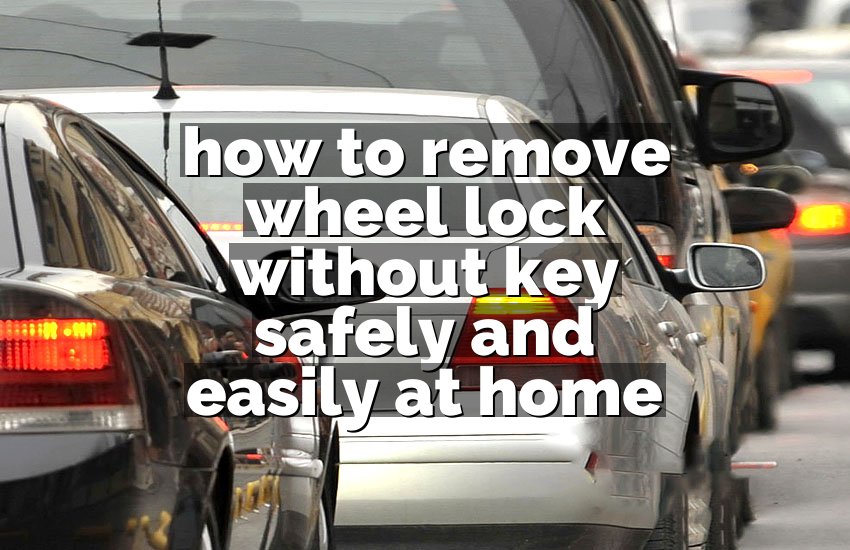There are several potential reasons causing a car not to go in reverse, such as low transmission fluid, a faulty transmission solenoid, a damaged torque converter, or a worn-out clutch. These issues can lead to a lack of power or resistance when attempting to shift into reverse gear.
Additionally, problems with the transmission linkage or a malfunctioning parking pawl could also be the culprits. Identifying the specific cause of the issue will require diagnostic testing by a qualified mechanic and may involve examining the transmission system, clutch, or related components.
Regular maintenance and timely repairs can help prevent these issues and ensure the smooth operation of the vehicle’s transmission system.

Credit: www.mistertransmission.com
Common Causes Of Reverse Gear Failure
Reverse gear failure in cars can be caused by a variety of factors, including issues with the transmission fluid, clutch problems, damaged gears, or a faulty shift solenoid. These underlying problems can prevent a car from going in reverse, requiring immediate attention and repair.
Transmission Fluid Issues
Low or contaminated transmission fluid can prevent a car from going in reverse.
Clutch Problems
A worn-out or malfunctioning clutch can cause issues with shifting into reverse gear.
Gear Selector Malfunction
Issues with the gear selector can lead to difficulties engaging the reverse gear in a vehicle.
Shift into reverse gear can fail due to transmission fluid, clutch, or gear selector problems.Signs Of Reverse Gear Failure
If your car is having trouble going in reverse, it could be a sign of reverse gear failure. The reasons for this issue could include transmission problems, low transmission fluid, a faulty shift linkage, or a damaged clutch. Adequate maintenance and timely inspections can help prevent reverse gear failure.
Grinding Noise
If you’re experiencing difficulties with your car not going into reverse, one of the telltale signs is a grinding noise. When you put your vehicle in reverse, it should engage smoothly and quietly. However, if you hear a grinding noise when shifting into reverse gear, it is typically a sign of reverse gear failure.
This grinding noise is often caused by worn clutch components or a failing transmission. The clutch is responsible for transferring power from the engine to the transmission, and over time, the clutch disc can become worn, resulting in difficulty engaging reverse gear. Additionally, a failing transmission can cause grinding noises as the gears struggle to engage properly.
Delayed Engagement
Another sign of reverse gear failure is delayed engagement. Normally, when you shift into reverse, your car should engage the gear almost immediately, allowing you to start moving in the opposite direction. However, if there is a delay in engagement or if the gear fails to engage at all, it may indicate a problem with the reverse gear.
Delayed engagement can be caused by a variety of issues, such as low transmission fluid levels, a malfunctioning solenoid, or worn-out gears. When any of these components are compromised, it can result in delayed or failed engagement of the reverse gear.
Slipping Gears
One more indicator of reverse gear failure is slipping gears. Slipping gears occur when your car unexpectedly shifts out of reverse gear on its own, or fails to engage reverse gear altogether. This can be a hazardous situation, as it can lead to loss of control and accidents.
Slipping gears can occur due to a worn-out clutch, damaged synchronizer rings, or even a faulty solenoid. If you notice your car slipping out of reverse gear or struggling to engage it, it’s important to have your vehicle inspected by a qualified mechanic as soon as possible to prevent further damage to the transmission.
Diy Reverse Gear Troubleshooting
Check Transmission Fluid Level
If your car is having trouble going in reverse, start by checking the transmission fluid level. Low levels can prevent effective engagement of the reverse gear. Follow the manufacturer’s guidelines to get an accurate reading of the transmission fluid level.
Inspect Clutch System
The clutch system plays a vital role in shifting gears, including reverse. Inspect the clutch for wear and tear, and ensure it is properly engaging. Any issues with the clutch can cause difficulty in engaging reverse gear.
Examine Gear Selector Mechanism
The gear selector mechanism may be the culprit if your car won’t go in reverse. Look for any loose or worn components that could be preventing the gear from engaging properly. Seek professional assistance if necessary.
Consulting A Professional Mechanic
If your car is having trouble going in reverse, seeking the advice and assistance of a professional mechanic is crucial in diagnosing and resolving the issue. Mechanics have the skills, experience, and tools necessary to accurately pinpoint the cause of the problem and recommend the best course of action to get your vehicle moving in reverse again.
Diagnostic Tests
A professional mechanic will perform a series of diagnostic tests to identify the root cause of the problem. These tests may include examining the transmission fluid level and condition, checking for any obstructions in the transmission system, and conducting a comprehensive inspection of the transmission components to detect any potential issues.
Repair Options
Following the diagnostic tests, the mechanic will be able to provide you with a detailed overview of the potential repair options available for your vehicle. This may involve addressing issues with the transmission linkage, replacing worn-out or damaged transmission components, or even conducting a full transmission rebuild if necessary.
Cost Estimates
Upon evaluating the necessary repairs, a professional mechanic will provide you with a breakdown of the costs involved in addressing the reverse gear issue. This will include the cost of parts, labor, and any additional services required to effectively restore the functionality of your vehicle’s reverse gear.
Preventive Maintenance Tips
Preventing your car from having trouble going in reverse requires regular maintenance and responsible driving habits. By following these preventive maintenance tips, you can save yourself from costly repairs and ensure that your car operates smoothly in both forward and reverse gears.
Regular Fluid Checks
Proper fluid levels are essential for the smooth operation of your car’s transmission. Regularly checking and maintaining the transmission fluid levels can help prevent issues with gear shifting, including difficulty going in reverse. Low or contaminated transmission fluid can hinder the engagement of gears, making it harder for your car to go in reverse. To avoid this, inspect the transmission fluid regularly and top it up or change it as recommended in your car’s manual.
Gentle Gear Shifting
The way you shift gears can also affect your car’s ability to go in reverse. Engaging gears abruptly can wear out the transmission components, leading to difficulties in shifting between gears, including reverse. To prevent this, practice smooth and gentle gear shifting techniques. Allow the transmission to completely disengage from one gear before shifting to another. Also, avoid forcefully jamming the gear shift into the reverse position, as it can cause damage to the synchronizers or the reverse gear itself.
Timely Repairs
Addressing any mechanical or electrical issues promptly can go a long way in preventing your car from having trouble going in reverse. Ignoring minor problems, such as noises, vibrations, or delays in gear engagement, can eventually lead to major transmission issues. Regular visits to a trusted mechanic for check-ups and repairs can help identify and resolve potential problems before they escalate. Timely repairs will not only save you from costly repairs in the future but also ensure smoother gear engagement, including reverse.

Credit: www.mistertransmission.com
Safety Measures For Driving Without Reverse
Parking Considerations
When parking, choose spots with ample space for easy exit maneuvers.
Emergency Maneuvers
In emergencies, turn off the engine, engage the emergency brake, and seek assistance.
Alternative Transportation Options
Consider public transport or carpooling if the reverse function is unavailable.
Common Myths And Misconceptions
When a car won’t go in reverse, it can be due to various factors such as a malfunctioning transmission, low transmission fluid, or a faulty shifter cable. Contrary to common myths, it’s not always a sign of major mechanical issues and can often be resolved with proper diagnosis and maintenance.
Myth: Driving In Neutral Fixes The Issue
One common myth about a car not going in reverse is that driving in neutral can fix the issue.
However, this is not true as it doesn’t address the underlying mechanical problems that could be causing the issue.
Myth: Diy Repairs Always Work
Another misconception is that do-it-yourself repairs always solve the problem of a car not going in reverse.
While some minor issues can be fixed with DIY solutions, complex transmission problems often require professional expertise.
Misconception: Reverse Gear Failure Is Inevitable
There is a common misconception that reverse gear failure is inevitable in all cars over time.
Regular maintenance and timely repairs can actually help prevent reverse gear issues and prolong the lifespan of your transmission.

Credit: www.carparts.com
Conclusion
There are several potential causes for a car’s inability to go in reverse. These include transmission issues, low transmission fluid, a malfunctioning shift linkage, or problems with the clutch or torque converter. It is crucial to diagnose and address the specific problem promptly to avoid further damage.
Regular maintenance and inspections can help identify and prevent these issues, ensuring smooth and reliable driving experiences. Remember, seeking professional assistance is always recommended for accurate diagnosis and effective solutions.


